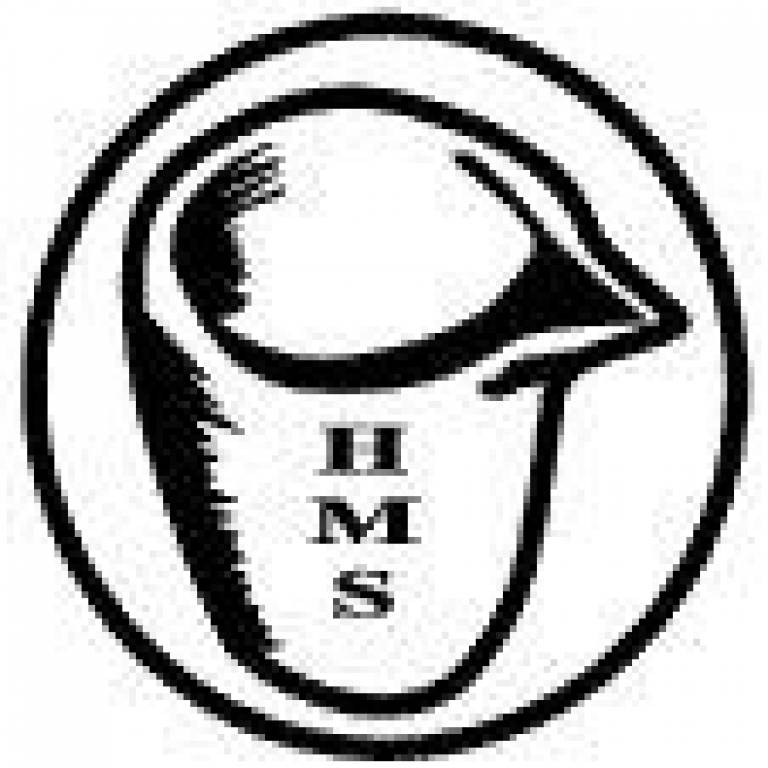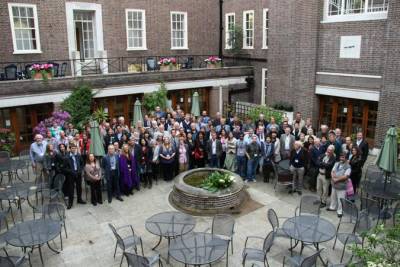HMS 50th Anniversary Conference
1 July 2013
The Historical Metallurgy Society's 50th anniversary conference has just been concluded after an engaging and fascinating few days of presentations, lively discussion, and museum visits.
 It was with great pleasure that IAMS members participated and contributed to the society's most academically orientated conference yet.
It was with great pleasure that IAMS members participated and contributed to the society's most academically orientated conference yet.
Although only planned to extend over three intensive days, activities really began the previous Thursday with a handling session at the Victoria and Albert Museum with the Curator of European Arms and Armour, Angus Patterson, and the Curator of Ironwork and French Sculpture 1600-1914, Alicia Robinson. The small venue ensured that the atmosphere was relaxed and allowed visitors to get up close and personal with some of the museum's best metalwork pieces.
The conference began in earnest the following morning with an engaging talk of the emergence of archaeometallurgy as a discipline by Paul Craddock in a session chaired by himself and Thilo Rehren, IAMS' director. The rest of the morning and afternoon were dedicated to papers on prehistoric metallurgy of the Old World. The topics mostly concentrated on copper and its alloys, from extraction to production, and covered an extremely widespread range of contexts, from Western Europe to Southeast Asia and from the 6th Millennium BC to the 5th century AD. This was followed by a wine reception and some very lively discussion at UCL's Institute of Archaeology.

The next day saw a further broadening of the range of topics to include iron, gold, and silver alloys, but spanning an even wider range of geographical and chronological contexts. The morning session, in part chaired by IAMS' Marcos Martinón-Torres, focused, if one can call it that, on the southern continents, from South America, through Africa, and dipping into India. The afternoon was dedicated to the northern continents, from China to the more perhaps more familiar cultural contexts of Western Europe.
Certainly a highlight of the evening was the conference dinner at the Ambassador Hotel where we were hosted, toasted, and fed as for a royal wedding. Lively discussion filled the hall for many happy hours culminating in an evening of Mediterranean dancing.
Resuming our meeting the following morning was a return to discussions of the northern continents' metallurgy, from the warmer Mediterranean to the subarctic Canadian iron industries of post-colonial Montréal and the steel and tin plating industries of Britain. The afternoon papers revolved around a series of overviews of the metallurgy of Italy, the German Alps, and the British Steel industries. Interesting papers were also given on the nature and significance of the concept of an 'iron age', and the current state of the art in the provenancing of iron artefacts.
The conference was closed by discussions by Thilo Rehren and Paul Belford on the directions of both the discipline of archaeometallurgy and of the Historical Metallurgy Society.
In retrospect, it is clear that this conference has offered delegates a global perspective of the discipline of archaeometallurgy and the kinds of topics researchers are currently interested in. Although the sessions sometimes seemed a bit too broad in scope for any real dialogue on any specific topic, this eclectic range surely gave a sense of the direction archaeometallurgy is generally taking.
The interest it garnered from the international community may have come as a surprise to a few members of the Historical Metallurgy Society who are more accustomed to the small and intimate meetings that the HMS typically holds, which focus mostly on the recent and certainly more local metallurgical industries. Even so, the success of the conference has clearly demonstrated that the international academic community is ready and eager to participate in a wider discussion of the study of metallurgy. And it is perhaps inevitable that the Society will have to increasingly cater to this audience given the continued decline of modern metallurgical industries in Britain, which will invariably lead to a reduced membership from this sector of industry. This is not to say that the 'Historical' aspect of Society is being marginalised, only that the it will need to diversify its membership and accommodate a wider scope of topics in order to thrive in a post-industrial environment.
IAMS, as a research institute, is therefore very happy to witness the steps which the HMS council members are clearly taking in this direction, and we wholeheartedly support the Society in their endeavour.
We would also like to extend our thanks to the main organiser, Eleanor Blakelock, who accomplished an extraordinary tour de force in gathering all of us together in London in this tremendously successful 50th Anniversary celebration conference.
 Close
Close

